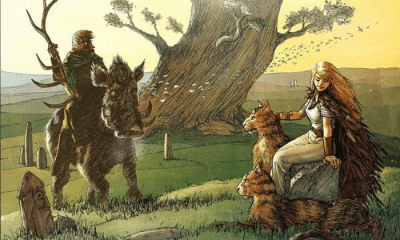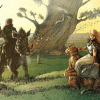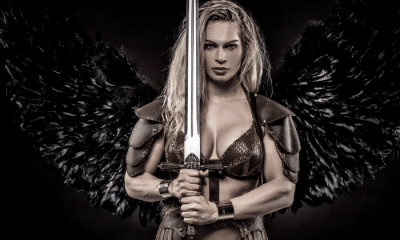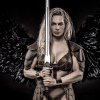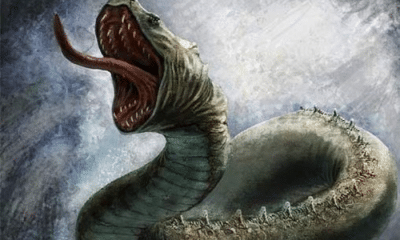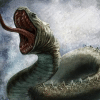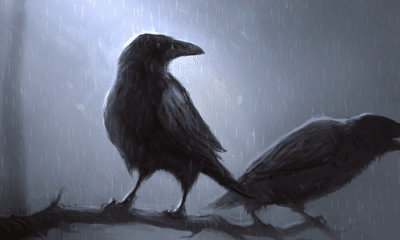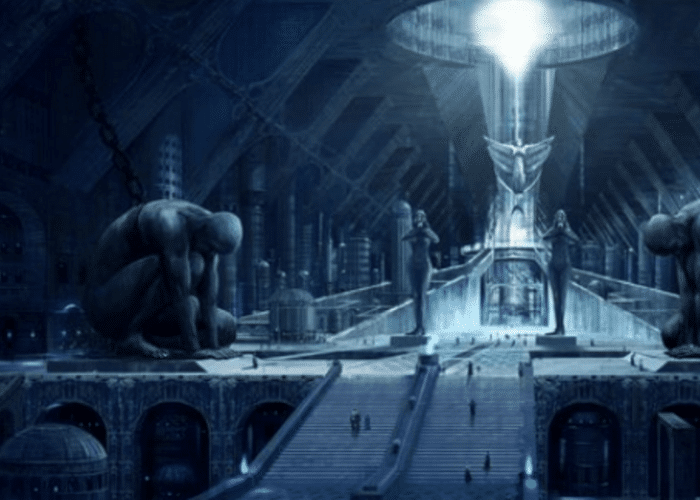
Norse
Svartalfheim: The Home of the Dark Elves
Svartalfheim: The Home of the Dark Elves
Among the Nine Worlds of Norse cosmology was Svartalfheim, the home of the black elves. But the question of who exactly lived there is not as simple to answer as it may seem.
The Prose Edda, a collection of Norse legends from 13th century Iceland, details the cosmology of the Norse people. They believed that there were Nine Worlds, each of which was the home of a different race of beings.
One of the Nine Worlds was Svartalfheim. The world’s name translates as “home of the black elves” and it is described as a dark, subterranean realm.
While the concept of light and dark elves is popular in modern fantasy, however, the descriptions of Svartalfheim and its residents in the few surviving stories set there do not seem to align with our concept of elves.
So who were the svartálfar who lived in this underground world?
Who Lived in Svartalfheim?
In most writings, the world of Svartalheim is known as the homeland of the dark elves.
The svartálfr, which translates as “black elves,” were held separate from the “light elves,” who were called ljósálfar or hvítálfar. Beyond this, however, little is known about these races or their homelands.
Svartalfheim is mentioned in only two instances, both in the collected stories of the Prose Edda.
In the first, the gods go to that realm to find chains strong enough to hold Fenrir, Loki’s monstrous wolf son. In the second, it is the world where Loki finds and captures Andvari to seize his cursed gold.
The svartálfr are mentioned only once in surviving sources, this time in the Poetic Edda. They are called the sons of Ivaldi.
Loki seeks out the sons of Ivaldi for their crafting skills when he must replace Sif’s hair with gold. They make two other gifts for the gods, Odin’s precise spear and Freyr’s magical ship.
While these stories all take place in what is called the land of the black elves, however, they do not seem to actually concern beings we would think of as elves.
Ivaldi, and by extension his sons, are usually called dwarves in modern translations. Their skill in crafting is certainly in keeping with the traditional characterizations of the dwarves.
The Prose Edda, meanwhile, specifically names the characters found in Svartalfheim as dwarves.
Like Ivaldi’s sons they are great craftsmen, this time making the strongest chain ever created. And in another example of a common dwarven portrayal, Andvari was obsessed with keeping and retrieving his gold.
Many historians are thus led to believe that the svartálfr were not, in fact, a type of elf. Instead, the word was an alternative name for the dvergr, or dwarves.
This is complicated, however, by another type of elf that is mentioned in the Prose Edda. The dökkálfar, or dark elves, are mentioned in the same text as the land of Svartalfheim.
My Modern Interpretation
Over the last two hundred years, scholars have proposed many interpretations for the types of elves mentioned in Norse mythology.
In the 19th century, influential folklorist Jacob Grimm attempted to tackle the issue of the three races of elves in the Eddas.
He proposed that there were three types of elves, but that the dwarves were among them.
In Grimm’s theory the elves and dwarves were originally conceived as beings of light and dark in both a spiritual sense and in their lifestyles. The dwarves lived below ground while the elves were said to be shining, bright beings.
Because the two types “were getting confounded,” however, writers felt the need to make the distinction clear in their writing. They began to call them light elves and dark elves.
Dark and black elves, Grimm theorized, were separate types of creatures. Citing both other folklore systems and a preference for trinities rather than duality, he proposed that the dökkálfar and svartálfar were separate races.
Most historians, however, have favored the theory that dökkálfar and svartálfar are interchangeable terms and both are used to refer to the dwarves.
Nither the dökkálfar nor the svartálfar are mentioned often in other poems, and when they are pictured they almost invariably have identifiers of dwarves. Svartalfheim is described as an underground world, which seems in keeping with traditions surrounding the dwarves as well.
According to this theory, then, Svartalfheim is the homeland of the dwarves.
The problem with this theory is that descriptions of Norse cosmology give a specific home world for the dvergr other than Svartalfheim. Niðavellir, which is also sometimes called Mystheim, is the home of the dwarves.
The dwarves would not be the only race to have two homes, the Vanir and Aesir gods maintained separate worlds even after they united, but it would be unusual.
As is often the case with Norse mythology, some historians have noted the lack of source material from before the 13th century and believe that much of the duality present in these stories is due to Christian influence.
While the existence of light and dark beings is not exclusive to Christianity, descriptions of the elves in Snorri Sturluson’s writings are similar to those of angels in some Christian texts.
If terms of light and dark were not used until Sturluson’s time, it is possible that the entire concept of Svartalfheim did not exist in the Viking Age religion.
A more radical theory has been proposed that agrees that Svartalfheim and the dark elves did not exist before the 13th century, but a different reason has given.
A few historians believe that the details of Svartalfheim and the light and dark elves were simply made up by Snorri Sturluson and have been preserved through his writings.
In Summary
In Norse cosmology, Svartalfheim was the home of the black elves. Exactly what these black elves were, however, is difficult to discern.
In most stories, the residents of Svartalfheim seem to be indistinguishable from the dvergr, or dwarves. In some cases, Svartalfheim is named as the location of a myth but the characters involved are called dvergr by the writer.
Simply saying that black elf was another term for dwarf is a popular explanation, but it also seems incomplete.
Another world was named as the home of the dwarves, so it seems unlikely that Svaralfheim could have been theirs. The further mention of dökkálfar, or dark elves, further complicates the theory.
Many historians have attempted to explain the nature of Svartalfheim and the types of elves in Norse folklore, proposing everything from Christian influence to a tripartite class system among the elven races. None of these explanations seems complete, however.
Unfortunately, a lack of primary sources means that the exact nature of Svartalfheim and the identity of its residents may never be fully understood.


